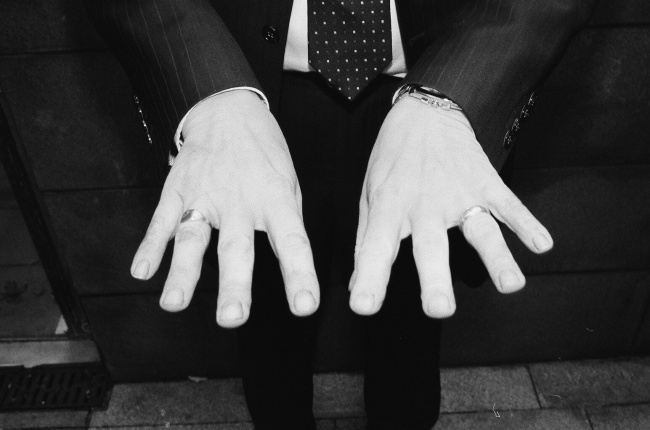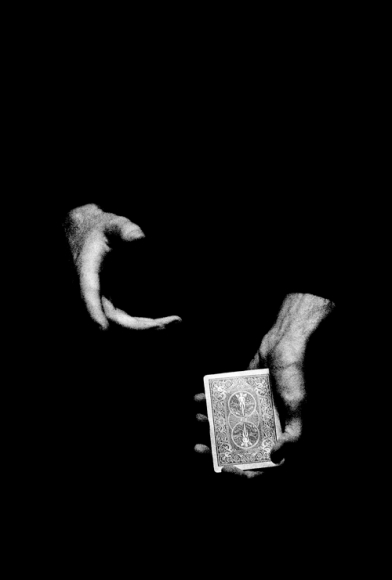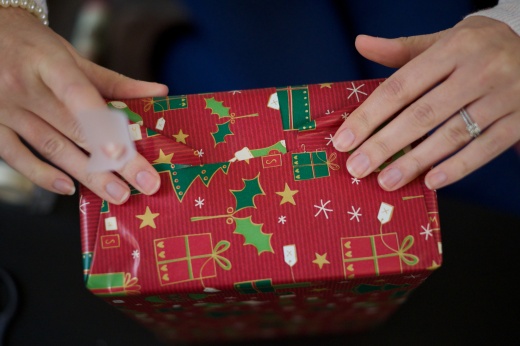Hands in Photography
by diarmuidmcdonald
All photographs included within this article are copywrited and owned by their respective photographers.
Recently I have grown more and more obsessed with hands in photography, not quite to the extent that Tarantino has been obsessing over feet for the past 25 years, but obsessing never the less. Despite my inactivity on the blog and flickr, I have been very busy photography-wise in the past two months; I have been concentrating on what I want to express and achieve through my photography, I have spent time with some truly inspiring photographers, and waved goodbye to a whole bunch of ‘faves’ on flickr (I might go into this in a later post). All in all it has been an odd, yet exciting period. But back to hands..
I have been spending more time looking at photography books, Collectives and watching films about photography. The equal and opposite reaction has been that I no longer trawl through street photography groups on flickr, because lets face it, most of the photos are mediocre at best. I found myself increasingly disinterested in photos of people simply walking past in the street and have been trying to avoid taking anymore photos like this. Something changed. I began taking photos much closer than I used to and instead of going for the ol’ eye contact, I looked to capture the essence of what I saw and felt in a different, more intimate, way.
Expression
What initially attracted me to photos that incorporate hands was their expressiveness. I think that the face is the most expressive part of the body, but hands are surely a close second. We use hands to gesture, to indicate and to greet others. Hands are fundamental to our body language. For example, in the photo below by W. Eugene Smith, all we see of the subject is their arms and hands, despite this, the photograph is full of expression.
The figure’s hands appear tense and distorted, this crooked and unnatural gesture is visually unsettling, giving the impression that the subject might be crippled or in pain. The photo, taken in a Haitian Mental Hospital, tells a visual story about this character without ever showing the subject’s face. W. Eugene Smith could have easily taken the shot face-on, the man looking out from behind the bars, yet by portraying the subject in this faceless way; hands held out in an unnatural gesture, he leaves the viewer to contemplate the identity of this figure. The end result is a photo that thematically echoes the subject’s environment, by visually expressing themes of madness, discomfort and imprisonment.
In the photo above, the absence of the subject’s face leaves their hands tell the story, if we consider the iconic shot by Diane Arbus’s shown below, the child’s contorted left hand perfectly compliments the surreal effect created by the grenade, facial expression and loose shoulder strap. If his hand was simply limp by his side, this would probably still be a great photo, but this ‘claw-like’ gesture adds to the feeling of mania exerted in this image.
I recently studied the Communicative Method of language teaching. Practitioners of this approach view gestures as an intrinsic element in communication, and I think this becomes apparent in photography. This is because photographs freeze moments, making the communicative capability of hands more apparent. There are near universal signs (or gestures) that convey meaning, these include clenched fists (anger / aggression), pressed palms (calming / prayer), and the middle finger (insult / provocation). By including instantly recognisable gestures like these in photographs, it becomes possible to convey the attitude of a subject at 1/100th of a second, and in the absence of any spoken or written words.
Character
From Dr T J Eckleburg to the Afghan Girl, eyes are often thought to be the ‘window to the soul’*, and Western culture frequently prioritises eyes as the focus of an individual’s image. Although this is a cultural norm in the western world, it is feasible for a society to perceive either the skin or even the human voice as the key to deciphering personality. I don’t mean to discredit the above examples of eyes, the Afghan Girl is a very powerful photograph and Dr T J Eckleburg a wonderful metaphor, the simple point to take away from this is that sometimes the apparent truths of Western understanding are simply prevalent, or entrenched, norms of understanding. That is to say, there are conceivable alternatives. I could go on to write whole essays on this topic, but my Politics & International Relations degree is now behind me and I don’t want to drift too far off topic. In terms of photography, the takeaway point is that to portray a subject’s identity it is not always necessary to photograph their face (and eyes). Often a person’s hands can tell you a great deal about them, and often in ways that their face will not.
In the above photograph by Danny Schaefer (click the image to visit his page), only the subject’s hand is shown, this works to great effect. From this image it is possible to discern a surprisingly large amount of information about the subject; their skin colour and relative age, body type (the fingers are long and thin, suggesting a slim, tall individual), and broad occupational field (the fingers show traces of paint and other materials, suggesting that this man works with his hands). Some of this (such as the last point) might not be apparent in a traditional portrait of this man. Furthermore, I find that this image leaves me asking for more, it leaves me wanting to see who this character is, and my first reaction upon seeing the photo was to ask Danny for the background. The details on the knuckles and the kinked little finger are in my opinion equally or more significant in portraying character than a photograph of the subjects face alone would be. The little finger in particular leaves the viewer wondering if there is a story behind this historic injury.
It is often very difficult (or perhaps impossible) to perceive the reality of a person behind their outwardly projected image. Today we hide behind copious layers of make-up and wrap ourselves in branded products in the search for identity, the irony is that we become less individual with every Abercrombe jumper or pair of Air Max that we wear. One reason why I am not attracted to women ‘dolled up’, ready to hit the town on a saturday night, is not that they are ‘showing too much’, but rather that they show too little. The reality of who a person might actually be is concealed by their make-up, tan and meticulously planned outfit (please note the same is true for bicep saturated men with their fashionable haircuts). It seems that The Matrix is real, and nowhere is it more apparent than club culture; with the agonising wake up scene taking new relevance and no-one better suited at portraying bumbling one dimensional morning-after-the-night-before confusion than Keanu Reeves.
The point I am trying to convey is that in modern society a great deal of time and money is spent trying to manipulate our outward presentation towards others. As the face and eyes are understood to be focal points in our image, these areas often get extra manipulation through hair gel, eyeliner and mascara. The result can be photographs (or should I just call them profile pictures?) with very little impact. This is not to say that photos of party-goers can’t be good; Maciej Dakowicz’s Cardiff After Dark is an incredible body of work. In my opinion it is sometimes possible to decipher information from a persons hands that has been hidden elsewhere.
The above photo was taken as part of an exercise I was undertaking which involved taking portraits of suits around Manchester City Centre. This photo was taken not long after I started experimenting with flash and unfortunately I misjudged the flash power and spoilt / overexposed the hands. I was talking to this chap while taking a few photos of him, mostly about his daughter who apparently studied film and media, when I noticed that his hands were surprisingly grubby. I asked to take a couple of photos of his hands and he obliged, explaining that he had been gardening the night before. The contrast between his smart suit and his dirty hands (although its difficult to see in my photo) struck a chord with me; he had taken care to don the uniform but had forgotten to scrub his fingernails. Visually this presented a duality between the character of a faceless suit, and the man who spends his thursday evenings pottering away in the back garden.
Of course hands can be manipulated with manicures, nail polish and the like, but in the above case, they provided an insight into this character that the rest of his appearance had repressed.
Thematic
Hands can also be effective in representing the desired theme of a photograph, or even series of photographs. A good example of this is W Eugene Smith’s photo included at the start of this article, in which the subject’s contorted gesture compliments the theme of insanity and pain. The end result is a powerful and provocative photograph. A similar effect is achieved in Danny Schaefer’s ongoing Magicians project in which he uses hands to visually represent the themes of mystery and magic.
It is not simply the act of photographing hands itself that builds themes, there has to be a link between the desired theme and a subject’s hands. This is often more apparent in photo sets, as themes can be build over more than one image. One of the reasons Danny Schaefer’s Magicians works so well is that slight of hand is a characteristic of magicians, the audience is often directed to focus on one element and thus remain oblivious to the ‘trick’ which often happens elsewhere. The above photo, which shows the magicians hands isolated against the dark background, can be seen as a metaphor for the trick; the act of drawing the viewer’s attention to a desired object in order to prevent the ‘trick’ itself from being deciphered. This technique is continued throughout the series, which combined with a grainy black and white look, creates visual themes of mystery, anonymity and intrigue.
Geometry
Hands often provide visually interesting subjects of photographs, especially if taken close up. Geometric shapes such as triangles between spread fingers, or knuckle contours can lead to interesting compositions. Hands are flexible and can assume a variety of gestures and shapes, and thus there is potential to exploit this in a number of different scenarios. Gestures such as pointing can often lead the eye to emphasise a particular element of the photograph, give direction to the photo, or just appear to tell a more interesting story.
Conclusion – Cutting off body parts is bad etiquette
The idea behind this article is not why you should drop everything else and start photographing hands, but instead why images that include hands can often be effective or memorable photographs. This can be especially effective to convey themes within a project or to add mystery to a photograph (by not including the subject’s face). Taking photos of hands alone is not necessary, but sometimes it is important to maintain an awareness of a subject’s limbs during the photographing process. From my experience in Flickr Street Photography groups, there is a focus on taking shots of the face with all other elements being subordinate or secondary. The end result is often ankles or wrists chopped out of the frame (obviously I am often guilty of this too), which can look sloppy and detract from the shot. I feel that Tony Ray Jones’ self-advice of ‘No Middle Ground’ is particularly relevant here; either get close and only include little, or take a step back and frame properly. There are no set guidelines or distances here, its just important to bear this in mind, especially in street photography where opportunities can present themselves in a fraction of a second
*Note I found an article claiming that scientists were able to prove that eyes were the ‘window to the soul’ but as it was written by the Daily Mail I am going to make the safe assumption that is largely false, and/or scaremongering.
If there are any photos that you know, or have taken, that are relevant to the above, or if you have any thoughts on the article let me know in the comment section below.








Portrait of Marcel Marceau by Karsh , many of his portraits incorporate the hands as a prominent part to the portrait.
Very interesting. I learned much from this. Rodin has created sculptures on hands only; very evocative & provocative. Also aesthetic plastic surgery of hands is still not possible. Hence one can tell one’s age and what kind of works one does eg hard labour or otherwise, just by looking at one’s hand/s.